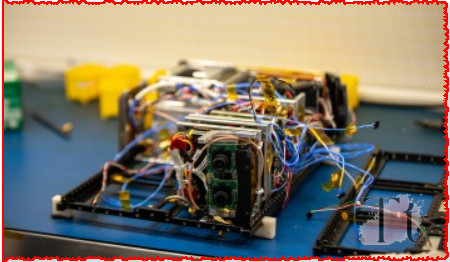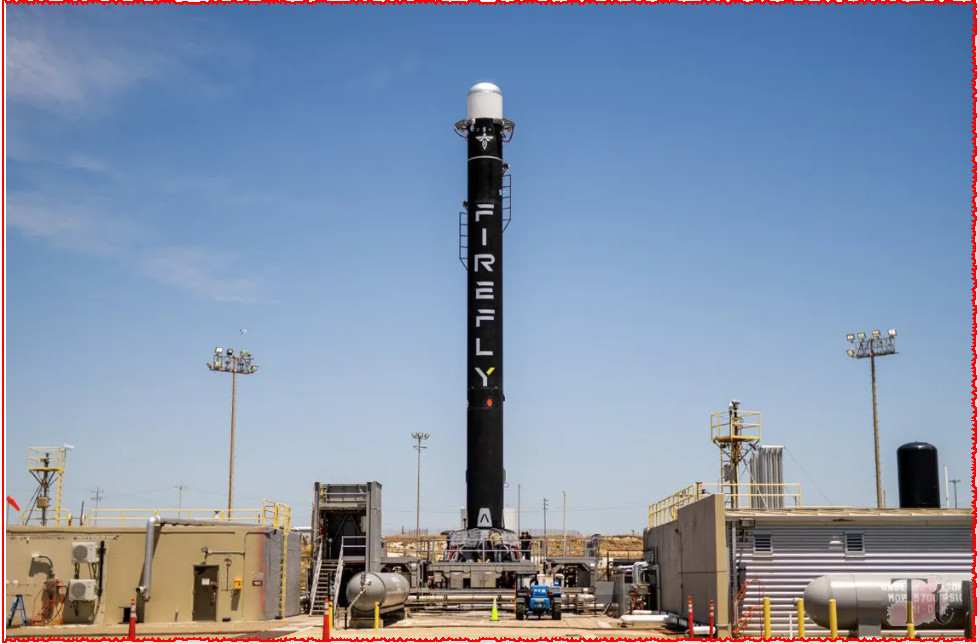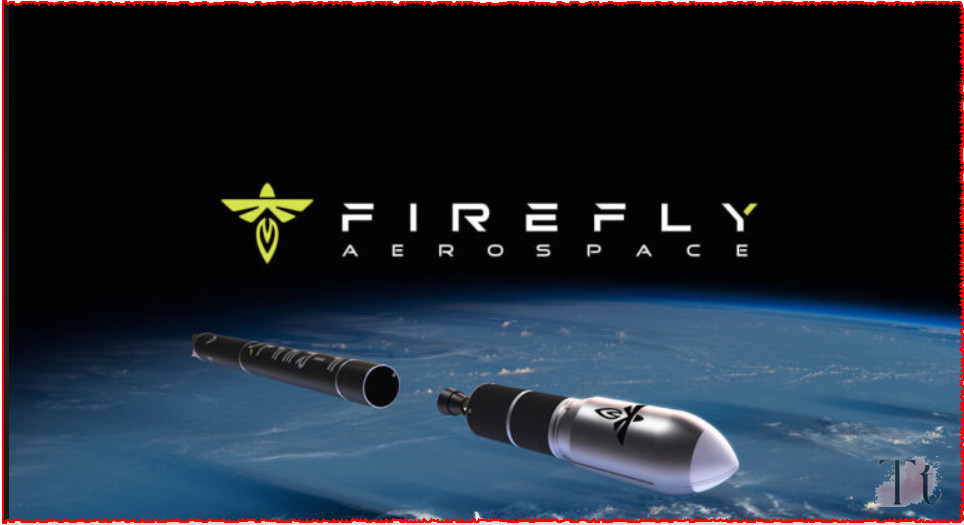On the early morning of July 2, 2024, Firefly Aerospace is set to make its fifth launch with its Alpha rocket, a mission dubbed “Noise of Summer.” The launch will take place from Vandenberg Space Force Base in California, scheduled for 12:03 a.m. EDT (0403 GMT; 9:03 p.m. on July 1 local California time). This event is significant not only for its technical aspects but also for what it represents in the broader context of modern space exploration and technological advancements.
Table of Contents

The Alpha Rocket and Its Mission
Firefly Aerospace’s Alpha rocket stands 95 feet (29 meters) tall and has been designed to deliver payloads to low Earth orbit (LEO). This specific mission will see the Alpha rocket carrying eight cubesats. These small satellites have been developed through NASA’s Cubesat Launch Initiative (CSLI), which is an effort to support the path to space for satellites created by U.S. colleges, universities, and nonprofit organizations.
The cubesats on the “Noise of Summer” mission come from various educational and research institutions, including the University of Arizona, the University of Kansas, the University of Maine, and the University of Washington. Additionally, a nonprofit organization called Teachers in Space and two NASA facilities Johnson Space Center in Houston and Ames Research Center in Silicon Valley are also contributing cubesats. The diversity of these contributors highlights the collaborative nature of modern space exploration, where educational institutions and nonprofit organizations play a crucial role in innovation and technological advancements.
Firefly’s Operational Efficiency and Responsiveness
One of the key features of the “Noise of Summer” mission is its demonstration of Firefly’s capability to execute responsive space operations. In this context, responsive space operations refer to the ability to prepare and launch a mission with a significantly reduced lead time. For “Noise of Summer,” this includes tasks such as transporting the payload fairing to the launch pad and mating it to the Alpha rocket within hours of the scheduled liftoff, a process that typically takes weeks.
This capability was previously demonstrated in September 2023 with the “Victus Nox” mission, where Firefly launched a payload for the U.S. This rapid turnaround is the fastest recorded for any national security mission, showcasing Firefly’s operational efficiency and its potential to provide quick-response launch services for a variety of clients, including governmental and defense sectors.
A Brief History of the Alpha Rocket
The journey of the Alpha rocket began with its debut flight in September 2021. Unfortunately, this initial test flight ended in failure shortly after liftoff. However, setbacks are not uncommon in the aerospace industry, and each failure provides valuable data that helps engineers and scientists improve the technology for future missions.
The second flight of the Alpha rocket took place in October 2022. While it was a partial success, as it managed to deliver seven satellites to orbit, it did so at a lower altitude than intended. This experience further contributed to the refinement of the rocket’s design and operational procedures.
The third mission, which occurred in September 2023, was notably successful. Named “Victus Nox,” this mission not only demonstrated the rocket’s improved reliability but also underscored Firefly’s capability for rapid deployment, as previously mentioned.
The fourth mission, part of the Noise of Summer launched on December 22, 2023, had mixed results. The Alpha rocket was tasked with delivering an electronically steerable antenna developed by aerospace giant Lockheed Martin to LEO. Although the rocket did not achieve the target orbit, Lockheed Martin still successfully completed their primary mission objectives, including the rapid commissioning of the satellite following its insertion into orbit. This mission exemplifies the complex nature of space missions, where even partial successes contribute to the overall progress and understanding of space technology.

Significance of the “Noise of Summer” Mission
The “Noise of Summer” mission is more than just another satellite launch. It represents the ongoing evolution of the commercial space industry and highlights several key trends and advancements:
- Educational and Nonprofit Involvement: By involving universities and nonprofit organizations in satellite development, the mission underscores the importance of educational institutions in advancing space technology and research. It provides students and researchers with hands-on experience and the opportunity to contribute to real-world space missions.
- Responsive Space Operations: Firefly’s ability to prepare and launch missions on short notice is a significant advantage in the space industry. This capability is particularly valuable for national security purposes, emergency response, and other time-sensitive applications.
- Technological Advancements: Each mission, whether fully successful or not, contributes to the iterative improvement of rocket and satellite technology. The lessons learned from previous missions help refine design, improve reliability, and enhance overall performance.
- Commercial Space Industry Growth: The successful execution of missions by companies like Firefly Aerospace is a testament to the growing capabilities of the commercial space industry. It reflects the increasing role of private companies in space exploration, complementing the efforts of governmental space agencies like NASA.
- Collaboration and Innovation: The mission highlights the collaborative nature of modern space exploration, where various stakeholders, including private companies, educational institutions, and nonprofit organizations, work together to achieve common goals. This collaboration fosters innovation and accelerates technological advancements.
The Role of Cubesats in Modern Space Missions
Cubesats, the small satellites being launched on the “Noise of Summer” mission, have become increasingly popular in recent years. Their compact size, relatively low cost, and versatility make them ideal for a wide range of applications, including scientific research, technology demonstration, and educational purposes.
Cubesats typically measure 10 cm x 10 cm x 10 cm and can be configured in various sizes, such as 1U, 3U, 6U, and 12U, depending on the mission requirements. Their modular design allows for the integration of various instruments and payloads, making them suitable for diverse missions.
The Cubesat Launch Initiative (CSLI) by NASA aims to provide opportunities for these small satellites to reach space, facilitating access for academic institutions, nonprofit organizations, and government agencies. Through CSLI, NASA supports the development and deployment of cubesats that can contribute to scientific research, technology development, and education.
The eight cubesats on the “Noise of Summer” mission exemplify the diverse applications of these small satellites. They represent a range of research and development projects, each with specific objectives and potential contributions to the broader field of space science and technology.
Firefly Aerospace’s Vision and Future Prospects
Firefly Aerospace, headquartered in Cedar Park, Texas, was founded with the mission of providing affordable and reliable access to space for small payloads. The company aims to address the growing demand for small satellite launches, a market that has expanded significantly with the proliferation of cubesats and other small spacecraft.
In addition to the Alpha rocket, Firefly is developing other launch vehicles and space technologies to cater to various market segments. The company’s vision includes not only launching payloads to orbit but also enabling deep space exploration and providing end-to-end space transportation solutions.
Firefly’s commitment to innovation and operational excellence is evident in its approach to rocket development and mission execution. By continuously improving its technology and demonstrating capabilities such as rapid response launches, the company is positioning itself as a key player in the commercial space industry.
Looking ahead, Firefly Aerospace has several ambitious plans. These include the development of larger launch vehicles, the establishment of partnerships with other space industry stakeholders, and the expansion of its launch capabilities to meet the diverse needs of its customers. The success of missions like “Noise of Summer” will play a crucial role in achieving these goals and advancing the company’s position in the competitive space market.
Firefly Aerospace: Pioneering Affordable Access to Space
Founded in 2014 by Tom Markusic, a former NASA engineer, Firefly Aerospace has quickly established itself as a key player in the commercial space sector. The company’s mission, exemplified by its “Noise of Summer” launch, is to provide affordable and reliable access to space for small payloads, targeting a market that has expanded significantly with the increasing use of small satellites.
The Alpha Rocket: Design and Development
The Alpha rocket, known as Firefly’s flagship launch vehicle, designed to deliver payloads of up to 1,000 kg to low Earth orbit, has seen its development marked by a series of iterative improvements, guided by lessons learned from both successes and setbacks. Standing 95 feet tall, Alpha is a two-stage rocket powered by Reaver engines in its first stage and Lightning engines in its second stage. These engines use RP-1 (a highly refined form of kerosene) and liquid oxygen as propellants, providing a cost-effective and efficient solution for small satellite launches.

Mission Milestones: From Setbacks to Success
Firefly’s journey with the Alpha rocket began with its maiden flight in September 2021. Despite a failure shortly after liftoff, this initial test flight provided valuable data that informed subsequent improvements. The second flight in October 2022 was a partial success, achieving orbit but at a lower altitude than planned. This mission further refined the rocket’s design and laid the groundwork for future successes like the “Noise of Summer” mission.
Conclusion
The “Noise of Summer” mission by Firefly Aerospace is a significant milestone in the company’s journey and in the broader context of space exploration. By launching eight cubesats developed through NASA’s Cubesat Launch Initiative, Firefly is contributing to scientific research, technology development, and educational advancement.
The mission also demonstrates Firefly’s capability for responsive space operations, highlighting its potential to provide quick-response launch services for various clients. The ongoing development and refinement of the Alpha rocket and other space technologies reflect the company’s commitment to innovation and operational excellence.
As the commercial space industry continues to grow, companies like Firefly Aerospace play a crucial role in expanding access to space, fostering collaboration, and driving technological advancements. The “Noise of Summer” mission is a testament to the progress being made and the exciting future that lies ahead for space exploration and technology.
Read more about New Criminal Laws in India 2024: Modernizing Justice Bliss


1 thought on “Noise of Summer: Firefly Aerospace’s Bold 2024 Launch”